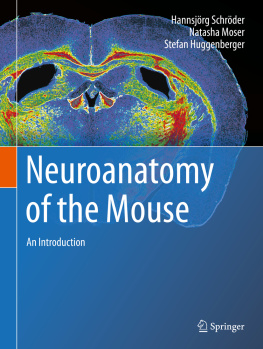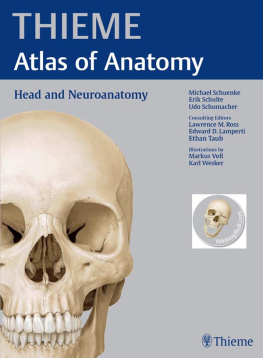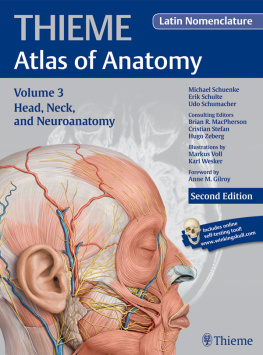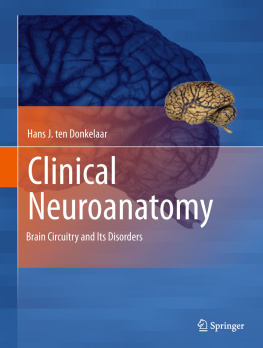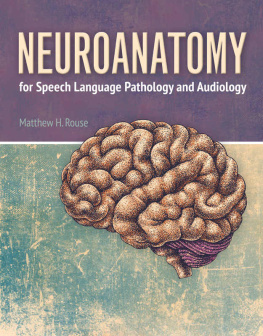Hannsjörg Schröder - Neuroanatomy of the Mouse: An Introduction
Here you can read online Hannsjörg Schröder - Neuroanatomy of the Mouse: An Introduction full text of the book (entire story) in english for free. Download pdf and epub, get meaning, cover and reviews about this ebook. year: 2020, publisher: Springer Nature, genre: Children. Description of the work, (preface) as well as reviews are available. Best literature library LitArk.com created for fans of good reading and offers a wide selection of genres:
Romance novel
Science fiction
Adventure
Detective
Science
History
Home and family
Prose
Art
Politics
Computer
Non-fiction
Religion
Business
Children
Humor
Choose a favorite category and find really read worthwhile books. Enjoy immersion in the world of imagination, feel the emotions of the characters or learn something new for yourself, make an fascinating discovery.
- Book:Neuroanatomy of the Mouse: An Introduction
- Author:
- Publisher:Springer Nature
- Genre:
- Year:2020
- Rating:4 / 5
- Favourites:Add to favourites
- Your mark:
- 80
- 1
- 2
- 3
- 4
- 5
Neuroanatomy of the Mouse: An Introduction: summary, description and annotation
We offer to read an annotation, description, summary or preface (depends on what the author of the book "Neuroanatomy of the Mouse: An Introduction" wrote himself). If you haven't found the necessary information about the book — write in the comments, we will try to find it.
Neuroanatomy of the Mouse: An Introduction — read online for free the complete book (whole text) full work
Below is the text of the book, divided by pages. System saving the place of the last page read, allows you to conveniently read the book "Neuroanatomy of the Mouse: An Introduction" online for free, without having to search again every time where you left off. Put a bookmark, and you can go to the page where you finished reading at any time.
Font size:
Interval:
Bookmark:
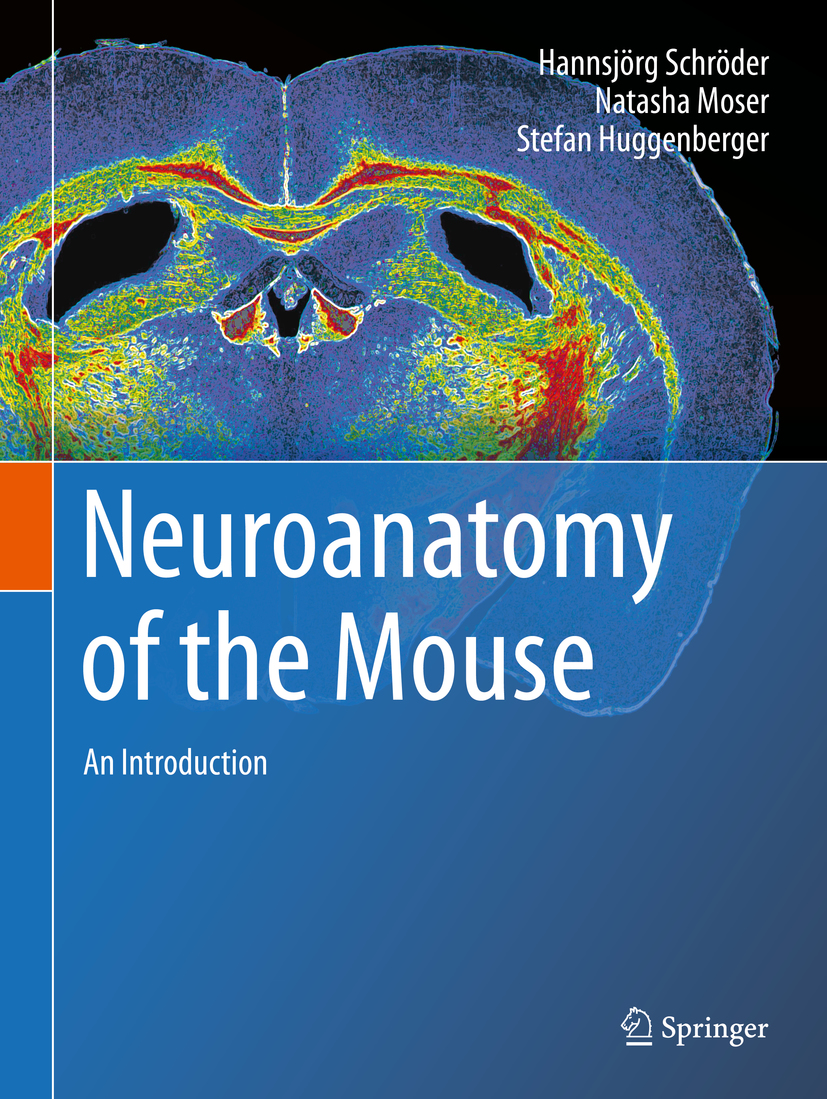

This Springer imprint is published by the registered company Springer Nature Switzerland AG
The registered company address is: Gewerbestrasse 11, 6330 Cham, Switzerland
This book came into being based on teaching rodent neuroanatomy to B.Sc. students of our local Neuroscience program ( http://www.neuroscience.uni-koeln.de/ ) which started more than 10 years ago. Since there was no book available suited for the beginners, the project started with a number of handouts and transparencies. Although or because the number of neuroanatomists in the classical sense is steadily decreasing, a basic understanding of the neuroanatomy of the mouse, an important model system of human diseases, is essential to researchers in the neurosciences, pharmaceutics, and human or veterinary medicine. The lack of introductory literature gave us the idea to conserve our accumulated knowledge in a book accessible to researchers and freshmen from different disciplines.
This, in turn, led to the idea to find a publisher that would be interested in a book on mouse neuroanatomy for freshmen. Fortunately, Springer was directly interested, and the material was revised according to this new concept not available on the market, so far. In this vein, I would like to very much thank Dr. Ina Stoeck and Wilma McHugh who cared for this book at Springer for the trusting cooperation.
The authors aimed to develop a book that is helpful for all those who make their first contact with mouse neuroanatomy. For this reason, each of the 15 chapters contains those facts, developments, and current topics in neurobiology that in our opinion are of particular importance for the understanding of mouse models for human diseases. For this reason, we have, wherever reasonable, included comparative aspects related to human neuroanatomy. Each of the chapters starts with learning goals and a list containing the most important topics covered in the chapter. This is followed by a summarizing paragraph of the basic information on the individual parts of the brain and their development. Subsequently, the different parts of the respective brain structure are described, and their functional aspects are explained. In this context, we would like to mention that the list of references of this topic is up to date but is far from being complete. The whole scientific field is rising, and the body of original publications feels overwhelming. Nevertheless, we did our best to include all the necessary references with special respect to, whenever possible, mouse-specific data and the specification of the mouse strains investigated. The text is complemented by a balanced selection of relevant photographs, microphotographs, graphics, and tables.
While this book provides basic but essential knowledge on the mouse neuroananatomy, more information on the molecular basis of the mouse brain and its development can be found in Watson et al. (2012). We furthermore advise the interested reader to consult a stereotaxic atlas for additional and detailed morphological data on the mouse brain, e.g., Paxinos and Franklin (2012).
The list of neuroanatomical structures dealt with in this book has been taken from the BrainNavigator and modified (Paxinos and Watson 2009). This list does not provide the Latin terminology which has been taken mainly from the Terminologia Neuroanatomica and Nomina Anatomica Veterinaria (for details, see Sect.). The cross-references between structures dealt with in individual chapters are indicated by the sign .
There is no book without errors or gaps in the content. We encourage the readers of this book to contact us whenever they find errors or topics not covered appropriately. All these issues will be considered in the revised edition.
Paxinos G, Franklin KBJ (2012) The mouse brain in stereotaxic coordinates. Elsevier, Amsterdam
Paxinos G, Watson C (2009) Interactive atlas and 3D brain software for research, structure analysis, and education. Elsevier, Amsterdam
Watson C et al. (2012) The mouse nervous system. Elsevier/Academic Press, London
First of all, we would like to thank the many students of the study program Neuroscience who, with their questions, had an important impact on the contents and shape of this book and even contributed valuable illustrations.
Diba Borgmann, M.Sc. | Chapters |
Univ.-Prof. Dr. Martina Deckert | Chapter |
Brigitte Dengler | Chapters |
Dr. Rob A.I. de Vos | Chapters |
Maja Dinekov | Chapters |
Priv.-Doz. Dr. Heike Endepols | Chapter |
Johanna Heider, B.Sc. (Supervisor: Dr. Sophie Steculorum) | Chapter |
Prof. Dr. Mathias Hoehn | Chapters |
Jutta Knifka | Chapters |
Univ.-Prof. Dr. Jrgen Koebke |
Font size:
Interval:
Bookmark:
Similar books «Neuroanatomy of the Mouse: An Introduction»
Look at similar books to Neuroanatomy of the Mouse: An Introduction. We have selected literature similar in name and meaning in the hope of providing readers with more options to find new, interesting, not yet read works.
Discussion, reviews of the book Neuroanatomy of the Mouse: An Introduction and just readers' own opinions. Leave your comments, write what you think about the work, its meaning or the main characters. Specify what exactly you liked and what you didn't like, and why you think so.

